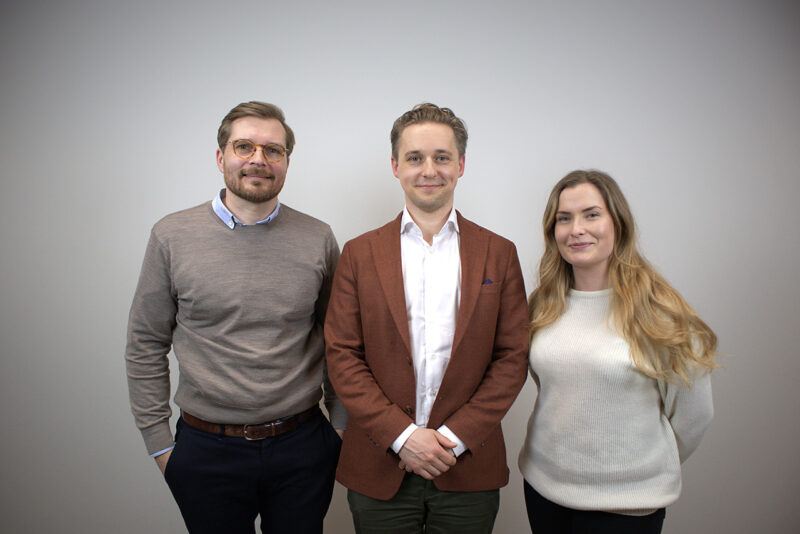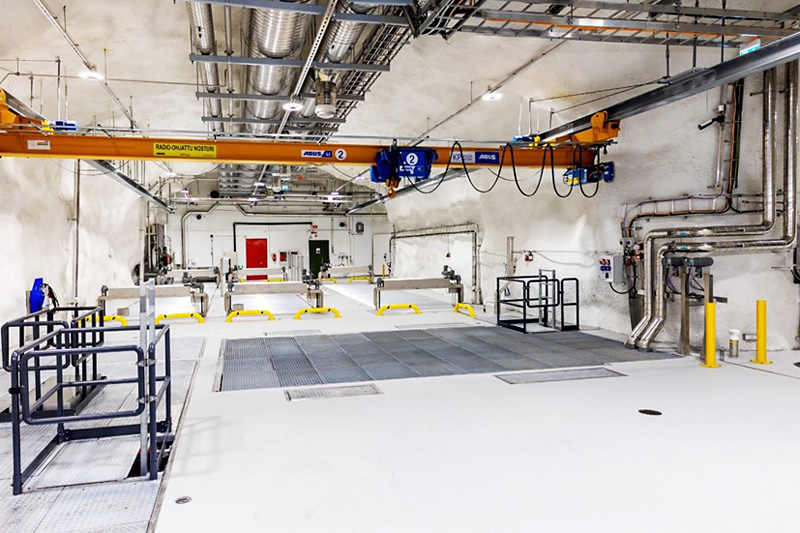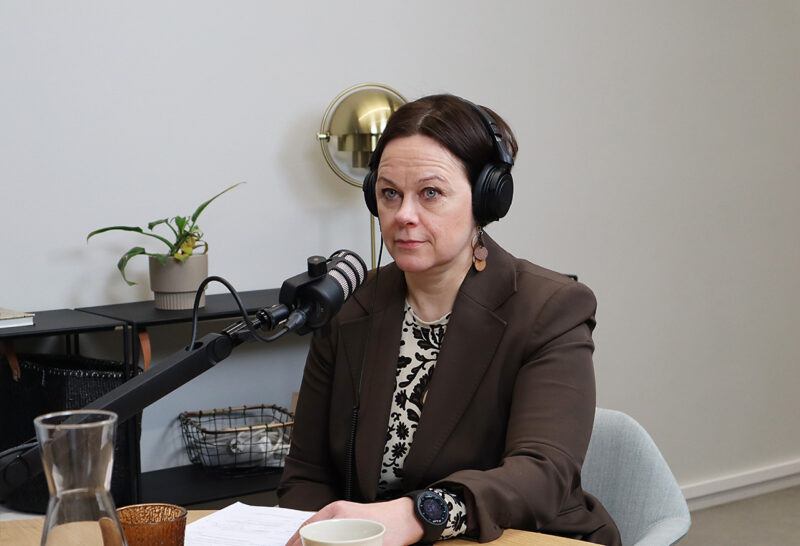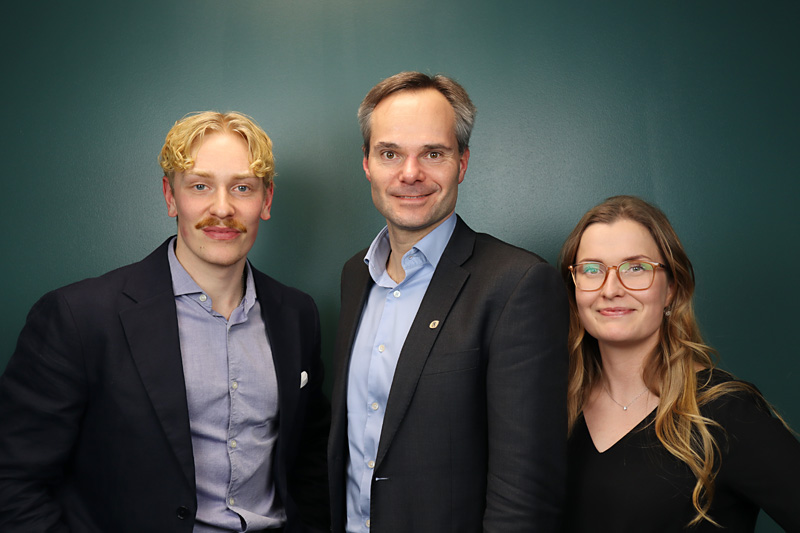Fossil-free steel is set to revolutionize the entire steel industry supply chain

SSAB is currently investing in the world’s first fossil-free steel production chain. A large-scale mini mill is being built in collaboration with partners in Luleå, Sweden. SSAB’s Vice President, Head of Fossil-Free Business Platforms, Niko Korte, recently appeared on Fimpec’s “Kumppanit” podcast to discuss the project, its background, and to reflect on what the transition to fossil-free steel means, together with Fimpec’s Chief Commercial Officer, Frans Jokinen.
The breakthrough of fossil-free steel is set to cause a major disruption in the steel industry, which has relied on the same basic method for over a thousand years: combining iron ore and coal to produce iron and carbon dioxide. Now, hydrogen is replacing coal in the reduction process, yielding iron and water instead. The driving force behind this transformation is the steel industry’s current emissions, which account for about seven percent of the world’s CO2 emissions, and the urgent need to eliminate them.
SSAB is leading the way in this transformation, having successfully implemented hydrogen-based reduction on a pilot scale together with its HYBRIT partners LKAB and Vattenfall. LKAB is now working on a larger demonstration plant to produce sponge iron on an industrial scale. SSAB is converting its whole Nordic steel production to fossil-free – the next step in SSABs transition is building a state-of-the-art fossil-free mini-mill in Luleå, Sweden. Niko Korte emphasizes that SSAB aims to stay at the forefront of this development, motivated by both a desire to reduce climate emissions and the business opportunities it presents.
“There is a race towards fossil-free steel, with benefits awaiting those who arrive first. There is already significant demand from various industries looking to reduce their carbon emissions, particularly in sectors like automotive and aviation, where consumer demand and regulation are pushing for emission reductions. The construction industry is another active player, but interest spans across almost all industries. The necessity of this change is evident in the positive feedback and commitments we’ve already received from customers in different sectors,” Korte explains.
Frans Jokinen from Fimpec adds that the construction sector has significant potential for reducing carbon emissions, potentially as much as in the production of fossil-free steel. Since a large part of construction-related emissions comes from materials, fossil-free steel, combined with carbon-neutral concrete solutions, could be key to achieving carbon neutrality in the industry.
The Hydrogen Reduction Method is the result of long-term development
The Luleå mini mill investment has brought SSAB’s plans for fossil-free steel production and supply chain development into the public eye. However, work on the project has been underway for years.
“We started development back in 2016, and now we’ve come this far. The journey has involved many challenges related to product development and change management, as many things are being redefined. It’s a huge transformation, with inherent risks and challenges, but it’s necessary. We have always believed that emissions can’t just be fine-tuned; they need to be eliminated, which is why this change in production methods is required. The significance of this shift is evident, as we are set to reduce 7% of Finland’s and 10% of Sweden’s CO2 emissions,” Korte says.
“An ambitious and climate-friendly goal has, on the other hand, motivated us to overcome the challenges, bringing a sense of purpose to the work. This is reflected in the way everyone has genuinely rallied behind the project,” he adds.
The entire production chain will change
Niko Korte emphasizes that the transition to fossil-free steel represents a radical transformation across the entire industry. It’s not just about adopting a new production method; the change will ripple through the entire supply chain, impacting steel users as well.
“The new production method will mean new modern plants and new modern IT systems. Production will rely much more on automation than it does today, and certain intermediate steps in production will be eliminated,” he explains.
One major change concerns raw materials: hydrogen will replace coal, requiring vast amounts of green electricity to power both hydrogen production and the reduction process. At the same time, this presents promising opportunities for the Nordic countries.
“The Nordic region has access to clean energy, which is essential because electricity will become a key production factor, both for hydrogen and steel production,” Korte notes.
In the new production chain, digitalization will play an even greater role, enabling the verification of zero emissions. Whereas emission calculations are currently based on averages across product categories, the new production method will allow for real carbon dioxide emissions to be tracked from the mine to the final product—across the entire chain. However, this will require significant changes throughout the supply chain.
“The systems and their integrations need to be on a completely different level than they are today. This isn’t just about us; the entire supply chain, from raw material producers to end-users, will need to collaborate, as there are many areas that need to be addressed,” he says.
The future looks promising
Korte sees fossil-freeness as a key competitive advantage for SSAB, while also emphasizing the importance of maintaining high product quality.
“Our goal is to produce fossil-free steel with the same or better properties than conventionally produced steel. In this regard, SSAB aims to challenge the entire market because we are truly creating a product where production emissions drop to nearly zero,” Korte states.
Looking ahead, competition is expected to intensify. However, Korte believes that SSAB has several key advantages. One is the availability of clean energy in the Nordic region. Another is SSAB’s close relationships with its customers.
“We know quite well who uses our steel, and we are closely involved in our customers’ processes. I think, at the corporate level, this is a big advantage for us,” he says.
“Certainly, the logistical location is one of SSAB’s strengths. Iron ore and the major European markets are close by, and green electricity is, of course, a major factor. All of these also contribute to delivery reliability,” Frans Jokinen continues.
Green Steel is not necessarily fossil-free
The market often talks about both fossil-free steel and green steel. Korte wants to make a clear distinction between the two terms.
“To us, fossil-free steel clearly means steel produced using hydrogen reduction, where production emissions are practically zero. Green steel is a somewhat vague, let’s say marketing term, that different players use for their steel products. It may involve smaller improvements or balancing projects, which are all steps in the right direction, but real emissions reductions might still leave 90% of the original emissions in place.”
“The distinction is clear. That’s why it’s important for our customers and consumers to challenge their suppliers and question what exactly is meant by the so-called green steel product,” he concludes.
Niko Korte and Frans Jokinen appeared on Fimpec’s “Kumppanit” podcast, hosted by Maiju Aaltonen (Hirvikallio).
Listen to episode 11 of the “Kumppanit” podcast: Fossil-Free Steel Revolutionizes the Steel Industry. Please note, that the podcast is available in Finnish.


